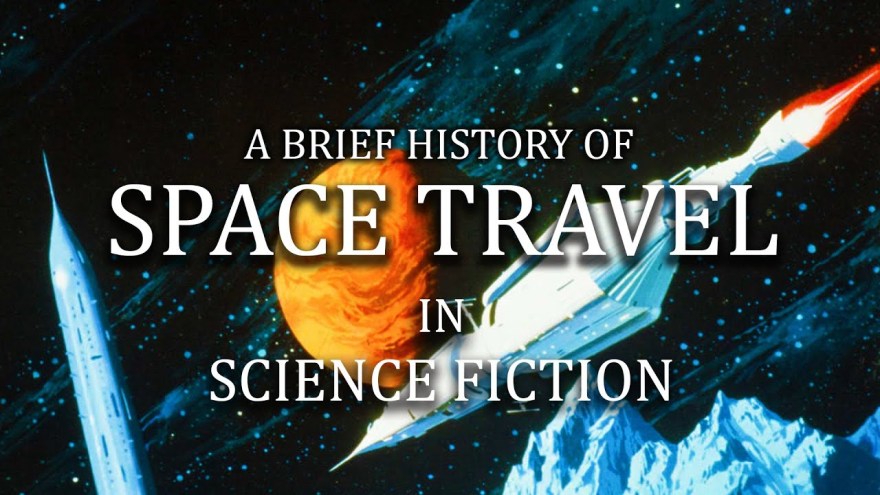Embark On An Epic Adventure: Exploring Space Travel And Exploration In Science Fiction!
Space Travel and Exploration in Science Fiction: Opening the Doors to the Unknown
Space travel and exploration have always captivated the human imagination, fueling our thirst for knowledge and pushing the boundaries of what is possible. The vastness of the universe, with its countless stars, galaxies, and mysteries, has inspired countless writers, filmmakers, and artists to envision a future where we venture beyond our own planet. In the realm of science fiction, space travel and exploration serve as a canvas for exploring the depths of our imagination, questioning the nature of reality, and contemplating our place in the universe.
What is Space Travel and Exploration in Science Fiction?
2 Picture Gallery: Embark On An Epic Adventure: Exploring Space Travel And Exploration In Science Fiction!


Space travel and exploration in science fiction refer to the portrayal of journeys beyond Earth and the exploration of the cosmos through imaginative storytelling. It encompasses a wide range of narratives, from classic works such as Jules Verne’s From the Earth to the Moon to modern masterpieces like Arthur C. Clarke’s 2001: A Space Odyssey and the sprawling universe of Star Wars. These stories often blend scientific concepts with fantastical elements, creating captivating worlds and narratives that transport readers and viewers to distant galaxies and unknown dimensions.
Who Are the Pioneers of Space Travel and Exploration in Science Fiction?

Image Source: ytimg.com
Many visionary authors and filmmakers have shaped the landscape of space travel and exploration in science fiction. The likes of H.G. Wells, Isaac Asimov, and Ray Bradbury have paved the way for the genre, crafting narratives that inspire wonder and curiosity. Filmmakers such as Stanley Kubrick and George Lucas have brought these stories to life on the big screen, immersing audiences in breathtaking visual spectacles that transport them to otherworldly realms.
When and Where Did Space Travel and Exploration in Science Fiction Begin?

Image Source: canberratimes.com.au
The origins of space travel and exploration in science fiction can be traced back to the 19th century with the works of authors like Jules Verne and H.G. Wells. Verne’s From the Earth to the Moon (1865) envisioned a journey to the moon, while Wells’ The War of the Worlds (1898) introduced the idea of alien invasion. These early works set the stage for the genre, inspiring generations of writers and filmmakers to explore the possibilities of space travel and exploration.
Why Are Space Travel and Exploration Important in Science Fiction?
Space travel and exploration in science fiction play a crucial role in expanding our horizons and challenging our understanding of the universe. They push the boundaries of what is scientifically possible and encourage us to question the nature of our existence. Through these narratives, we can explore themes of human curiosity, the search for meaning, and the implications of our technological advancements. It allows us to dream and imagine a future where we transcend the confines of our own planet, offering a glimpse into what lies beyond.
How Does Space Travel and Exploration in Science Fiction Influence Real-World Exploration?
Space travel and exploration in science fiction have a profound impact on real-world exploration. Concepts and technologies imagined in science fiction often serve as inspiration for scientists and engineers. For example, Arthur C. Clarke’s concept of geostationary satellites in 2001: A Space Odyssey paved the way for modern communication systems. Similarly, the idea of colonizing other planets, popularized in works like Kim Stanley Robinson’s Mars Trilogy, fuels discussions and research into the future of human space exploration.
Transition Paragraph: Unveiling the Wonders of Space Travel and Exploration
As we dive deeper into the realm of space travel and exploration in science fiction, let us explore some frequently asked questions, the types of journeys we encounter, and the thrilling adventures that await. From the smallest spaceships to the grandest interstellar expeditions, there is something for every enthusiast in this extraordinary genre.
FAQ: Common Queries About Space Travel and Exploration in Science Fiction
1. Can we really travel faster than light in science fiction?
2. Are there any rules or limitations in these fictional universes?
3. How do authors and filmmakers balance scientific accuracy with storytelling?
4. What are some notable examples of space travel and exploration in science fiction?
5. How has this genre evolved over time?
Types of Space Journeys in Science Fiction
Space travel and exploration in science fiction come in various forms, each with its unique characteristics and challenges. From intergalactic wars to solitary expeditions, these journeys offer a vast spectrum of experiences for readers and viewers alike. Some common types include:
1. Interplanetary Travel: These journeys take us beyond Earth’s atmosphere to explore neighboring planets and moons. Examples include Ray Bradbury’s The Martian Chronicles and Andy Weir’s The Martian.
2. Interstellar Voyages: These epic adventures propel us beyond our solar system, introducing us to alien civilizations and uncharted territories. Christopher Nolan’s Interstellar and Frank Herbert’s Dune exemplify this subgenre.
3. Time Travel: While not strictly space travel, time travel narratives often intersect with space exploration, allowing characters to visit different periods in history or glimpse into the future. H.G. Wells’ The Time Machine and the Back to the Future trilogy are iconic examples.
4. Space Colonization: These stories envision a future where humanity has established colonies on other planets or built massive space habitats. Kim Stanley Robinson’s Red Mars series and Robert Heinlein’s The Moon is a Harsh Mistress explore the challenges and possibilities of colonizing space.
The Pros and Cons of Space Travel and Exploration in Science Fiction
Space travel and exploration in science fiction offer a multitude of benefits, from inspiring scientific advancements to fostering a sense of wonder and curiosity. They encourage us to contemplate our place in the universe and the future of our species. However, there are also some drawbacks to consider. The genre can sometimes perpetuate unrealistic expectations or oversimplify complex scientific concepts. It is essential to approach these narratives with a critical eye while appreciating the imaginative wonders they create.
Conclusion: Embarking on a Journey Beyond the Stars
Space travel and exploration in science fiction hold a special place in our hearts, igniting our imagination and inspiring us to dream of a future where we conquer the unknown. Through these stories, we can explore the depths of the cosmos, encounter alien civilizations, and ponder the mysteries of the universe. Whether it is through the pages of a book or the silver screen, the genre of space travel and exploration in science fiction allows us to embark on extraordinary adventures from the comfort of our own imaginations.
As we continue to push the boundaries of scientific discovery and real-world space exploration, let us remain grateful for the rich tapestry of fiction that has paved the way. By embracing the wonders of the unknown and the potential that lies beyond the stars, we can foster a future where humanity truly becomes an interstellar species.
This post topic: Travel


